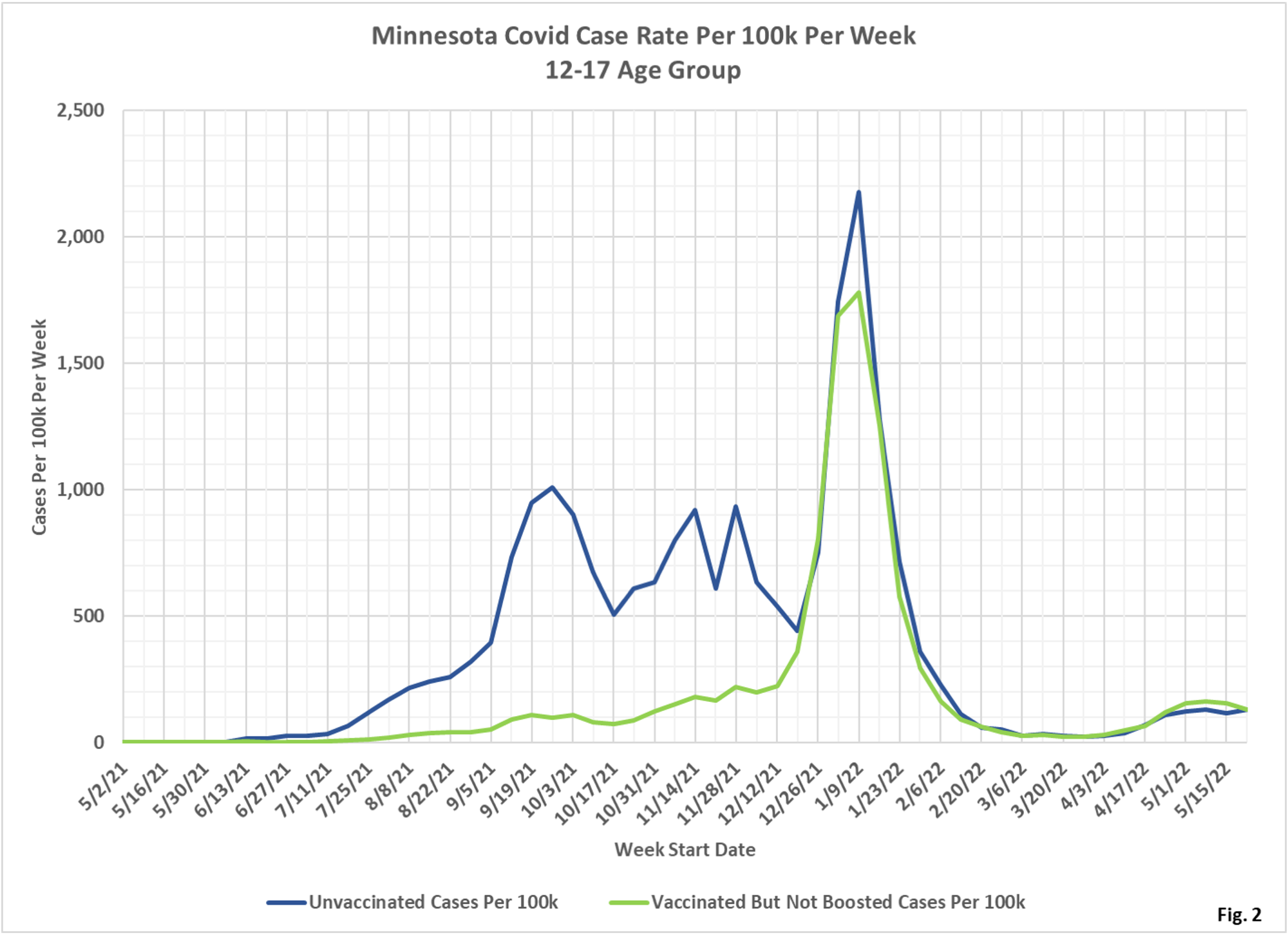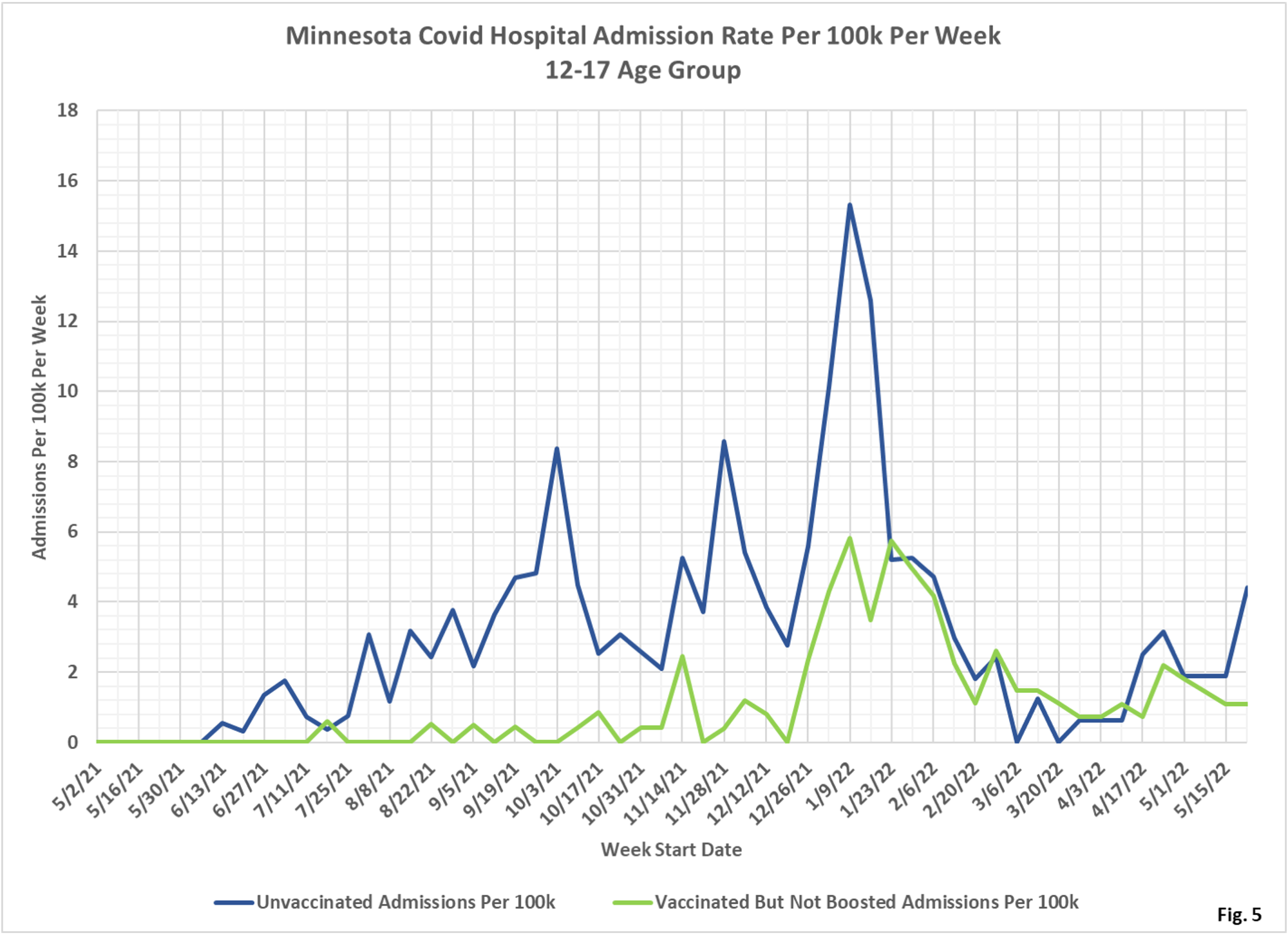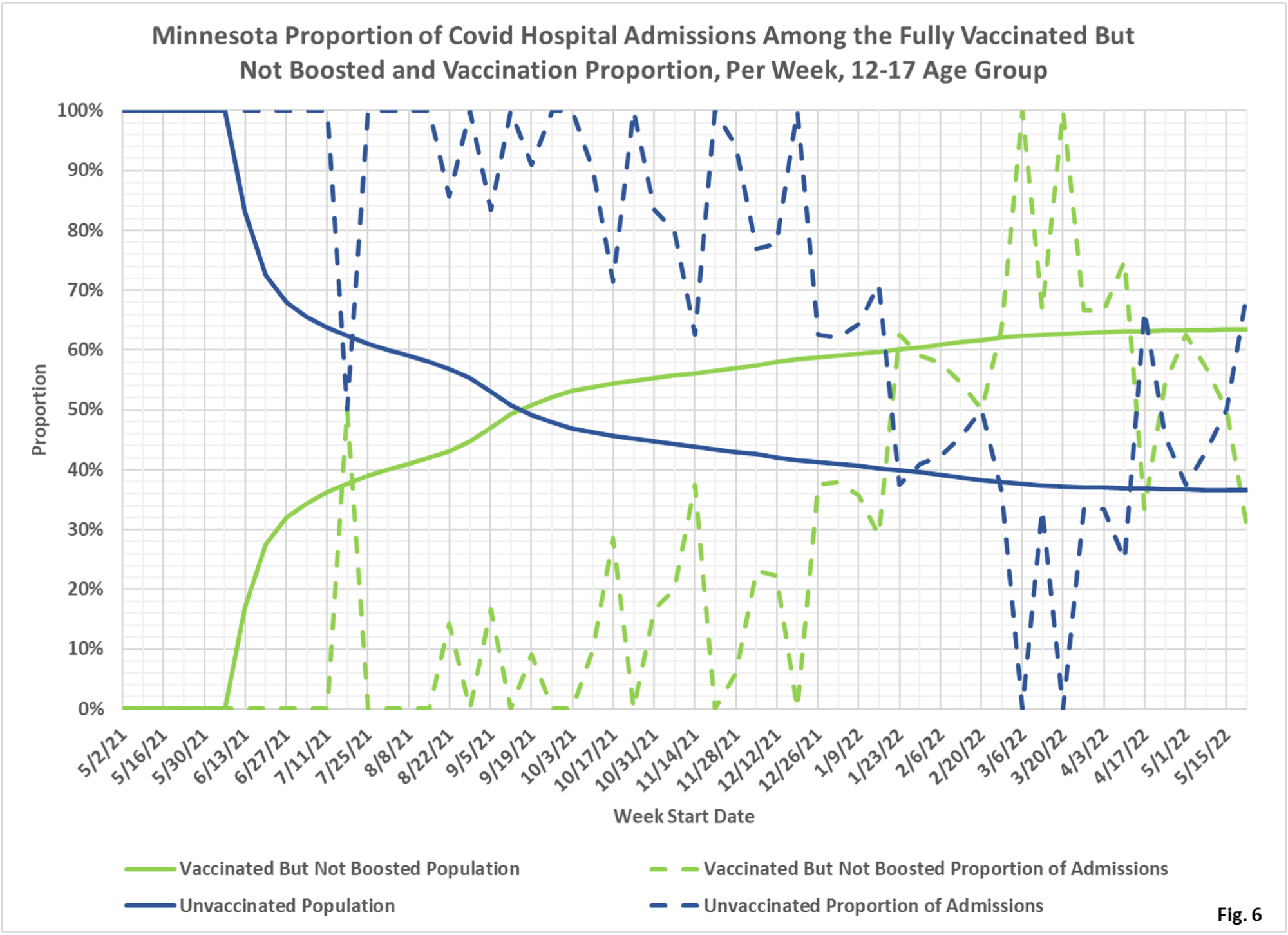As with the very youngest group, vax now provides no protection against infection or hospitalization among older children. As with all these charts, the lessening of protection after a brief period of effectiveness is apparent.





 Dave’s notes:
Dave’s notes:
- The following charts illustrate, for the 12-17 year old age group, that being vaccinated appears to offer minimal protection for testing positive for Covid in the most recent weeks’ data available, but the vaccinated have a slightly lower rate of hospital admissions compared to the unvaccinated. The Minnesota Department of Health does not publish breakthrough death data or booster data for the 12-17 age group.
- This post is an update to the 12-17 age group breakthrough charts first published here: https://healthy-skeptic.com/
2022/06/06/breakthrough- events-ages-12-to-17/ - There are 6 charts in this set, 3 charts each for cases and hospital admissions. Each set of 3 charts consists of the actual events per week (cases, admissions, or deaths); the rate per 100k each week, and the proportion of events compared to the proportion of the vaccinated or unvaccinated population.
- Fig. 1: This chart plots the cases in the 12-17 age group per week among the unvaccinated and vaccinated but not boosted populations each week. Since the week of 12/19/2021 there have been more cases each week among the vaccinated than among the unvaccinated.
- Fig. 2: This chart displays the case rates per 100k for each subgroup in the 12-17 age group. In the most recent week’s of data the vaccinated and unvaccinated have almost identical rates of cases per 100k.
- Fig. 3: This chart displays the proportion of the 12-17 population who are unvaccinated (solid blue) and vaccinated but not boosted (solid green). For each population group we also display the proportion of cases each week (dashed lines of same color). The way to interpret this chart is to compare the proportion of breakthroughs to the proportion of vaccinations for each group. Whenever the dashed breakthrough proportion line is below the solid vaccination line of the same color, then that category is underrepresented for population, and that vaccination status might be said to be beneficial (ignoring for now other confounding factors). For the week of 5/22/2022, for example, 64% of this age group was vaccinated (solid green line) while this group accounted for 63% of the cases (dashed green line). We would interpret this to show that being vaccinated did not reduce an individual’s chances of testing positive for Covid for that week. On the other hand, for example, we can see that being vaccinated but not boosted was very beneficial the week of 10/17/2021 (55% vaccinated, but only 15% of the cases) but over time the vaccinated but not boosted subgroup gradually lost the benefit of vaccination.
- Fig. 4-6: These charts display the hospital admissions, hospital admission rates per 100k, and hospital admissions proportions for the 12-17 age group, in an identical format to the case charts in Fig. 1 through Fig. 3. The unvaccinated have made up the higher number of admissions in the most recent data point (Fig. 4). The admissions per 100k for the unvaccinated have been higher than the rates per 100k for the vaccinated over the last several months (Fig. 5). Fig. 6 shows that admissions have been highly variable, not surprising given the relatively small numbers of admissions in this age group.
- All data is obtained from the Minnesota Department of Health (MDH) Vaccine Breakthrough Weekly Update web site https://www.health.state.mn.
us/diseases/coronavirus/stats/ vbt.html. A data file on this site, vbtadultcirates.xlsx, contains all of the age group data. - MDH defines the fully vaccinated (what we have termed vaccinated but not boosted) as those who have not received a booster after completing their primary vaccination series, and had been vaccinated at least 14 days prior to testing positive.

